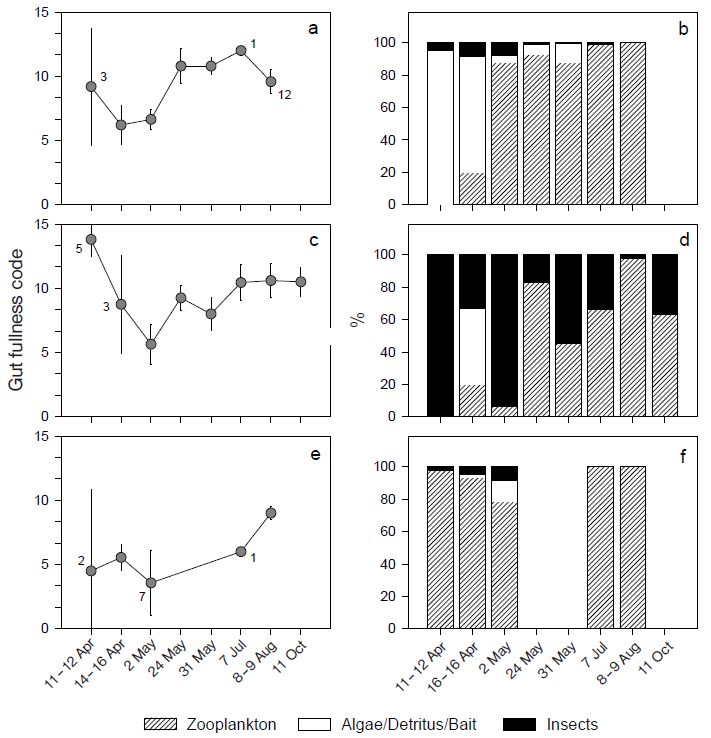 In the deep and slightly eutrophic dam part of the Rímov Reservoir (Czech Republic), the fish use of open water habitat was studied by means of gillnetting, hydroacoustics and diet analyses during the period from April to October 2005. The day and night acoustic surveys revealed majority of pelagic fish present in the upper 5 m of the water column. The highest gillnet catches of planktivorous fish in epipelagic waters were obtained in May and August. The lowest fish catches were recorded in April and October which resulted in significant positive correlation between the gillnet catch per unit effort and water temperature. The majority of captured fish were adults of three cyprinid species: roach Rutilus rutilus, bleak Alburnus alburnus and bream Abramis brama. In the early spring the food of the three species was diversified: bream consumed primarily cyclopoid copepods, bleak fed on terrestrial insects, and gut content of pelagic roach consisted mainly of littoral food components, algae and detritus. In the late spring and summer however, the diets of all three cyprinids were predominated by large cladocerans, thus proving the use of open water habitat abundant in this prey.
In the deep and slightly eutrophic dam part of the Rímov Reservoir (Czech Republic), the fish use of open water habitat was studied by means of gillnetting, hydroacoustics and diet analyses during the period from April to October 2005. The day and night acoustic surveys revealed majority of pelagic fish present in the upper 5 m of the water column. The highest gillnet catches of planktivorous fish in epipelagic waters were obtained in May and August. The lowest fish catches were recorded in April and October which resulted in significant positive correlation between the gillnet catch per unit effort and water temperature. The majority of captured fish were adults of three cyprinid species: roach Rutilus rutilus, bleak Alburnus alburnus and bream Abramis brama. In the early spring the food of the three species was diversified: bream consumed primarily cyclopoid copepods, bleak fed on terrestrial insects, and gut content of pelagic roach consisted mainly of littoral food components, algae and detritus. In the late spring and summer however, the diets of all three cyprinids were predominated by large cladocerans, thus proving the use of open water habitat abundant in this prey.
Keywords: bleak; bream; epilimnion; planktivorous fish; roach; seasonal patterns
